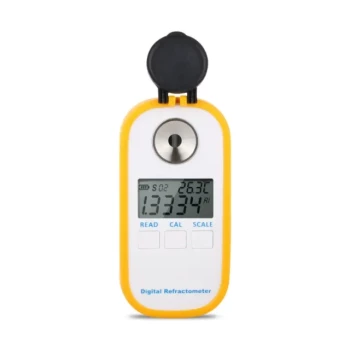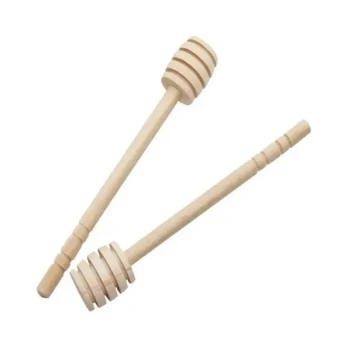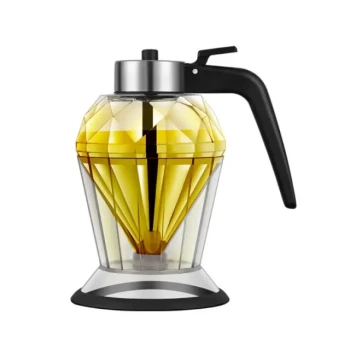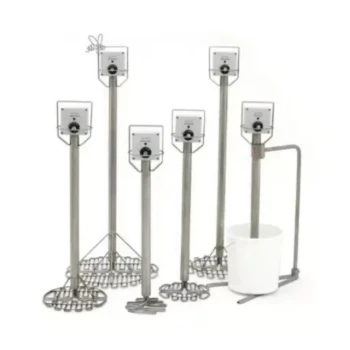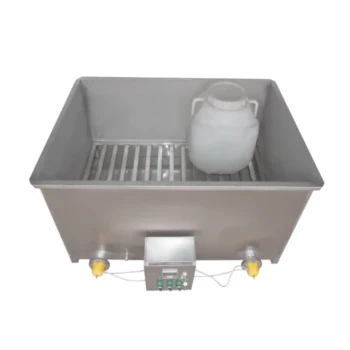In short, harvesting honey with high moisture content leads to fermentation. This process spoils the honey, creating sour flavors and a bubbly appearance, which renders it unsuitable for sale as table honey and significantly reduces its value and shelf life.
The core issue is microbiological. Honey naturally contains dormant, sugar-tolerant yeasts. When the moisture content rises above the critical threshold of roughly 19%, these yeasts activate and begin to consume the honey's sugars, producing alcohol and carbon dioxide, which effectively ruins the product.
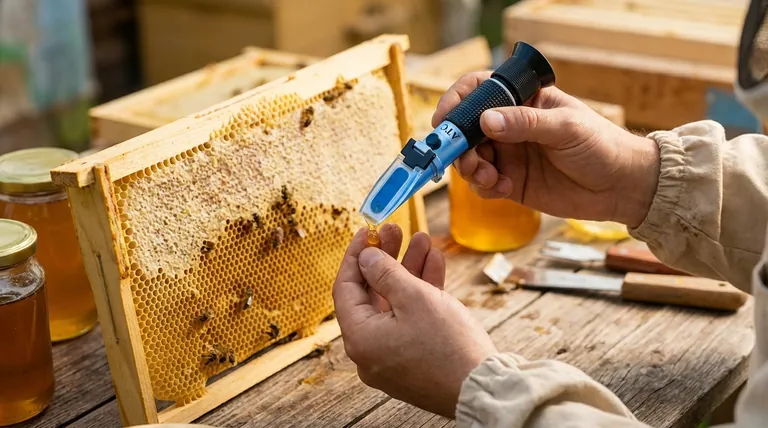
The Science of Spoilage: Why Moisture Matters
Honey is famously stable due to its low water activity, which prevents most microbes from growing. However, this stability is conditional and depends entirely on maintaining a low moisture level.
The Role of Osmotolerant Yeasts
All raw honey contains wild, osmotolerant yeasts. These are hardy microorganisms adapted to survive in high-sugar environments.
In properly cured honey, the low water content creates high osmotic pressure, drawing water out of the yeast cells and keeping them dormant.
The Critical Threshold
When the moisture content exceeds 18-19%, the osmotic pressure drops. This provides enough available water for the yeasts to become active, multiply, and begin the fermentation process.
The Telltale Signs of Fermentation
Fermented honey is easy to spot. You will notice a distinct, sour or alcohol-like smell and taste. The production of carbon dioxide gas will cause the honey to appear bubbly or frothy. In a sealed container, this gas pressure can even cause lids to bulge or pop.
How High Moisture Occurs (And How to Prevent It)
High moisture content isn't a random event; it's almost always the result of environmental conditions or harvesting practices.
Harvesting Unripe Honey
Bees cure honey by fanning their wings over the nectar stored in honeycomb cells. This evaporates water until the moisture content is ideal, at which point they cap the cell with wax. Harvesting honey from uncapped or partially capped frames is the most common cause of high moisture.
Environmental Factors
Harvesting during or immediately after a rainy period can introduce excess moisture into the hive. Similarly, beekeeping in consistently humid climates makes it more challenging for bees to cure honey to a low moisture level.
Contamination During Extraction
A less obvious source of high moisture is the extraction process itself. Using equipment that was not thoroughly dried after cleaning or intentionally adding water can compromise an entire batch of otherwise perfect honey.
Understanding the Trade-offs and Risks
Dealing with high-moisture honey involves significant compromises that impact its quality, value, and usability.
The Downgrade to "Baker's Honey"
Honey that has fermented is no longer legally or palatable as table honey. Its only potential use is as baker's honey, an industrial-grade product sold at a fraction of the price. The fermentation byproducts can also affect the final taste of baked goods.
The Challenge of Remediation
You can reduce moisture by gently heating the honey or by using a dehumidifier in a sealed room with the honey exposed to the dry air. However, this is a delicate balance. Overheating honey destroys its beneficial enzymes and can darken its color and alter its flavor, reducing its quality.
Packaging and Handling Issues
Even if it hasn't fermented yet, high-moisture honey is less viscous and stickier. This makes it more difficult to handle during extraction and bottling, leading to more mess and product waste.
Making the Right Choice for Your Harvest
Your goal determines your strategy. The key is to be proactive about moisture management from the moment you consider opening the hive.
- If your primary focus is producing top-quality table honey: Prioritize harvesting fully capped frames and invest in a honey refractometer to test your honey's moisture content before extraction.
- If your primary focus is avoiding waste after a wet harvest: Immediately test the moisture level. If it's high, use a dehumidifier or a gentle heating method to reduce it before fermentation can begin.
- If your primary focus is ensuring long-term storage stability: Never bottle honey that is above 18.6% moisture. Your goal should be to get it as low as possible to guarantee it will never ferment on the shelf.
Ultimately, managing moisture is the defining factor that separates high-quality, shelf-stable honey from a spoiled and devalued product.
Summary Table:
| Issue | Consequence | Prevention |
|---|---|---|
| Moisture > 19% | Fermentation (sour taste, bubbles, gas) | Harvest only fully capped frames |
| Unripe Honey | Spoiled, devalued product | Use a honey refractometer to test |
| Humid Conditions | Difficulty for bees to cure honey | Be mindful of weather and climate |
| Wet Equipment | Contaminates the entire batch | Ensure all extraction gear is thoroughly dry |
Protect your harvest and your profits with the right equipment from HONESTBEE.
Don't let high moisture content ruin your hard work. As a trusted wholesale supplier to commercial apiaries and beekeeping equipment distributors, HONESTBEE provides the durable, reliable tools you need for a successful harvest—from refractometers to precise extraction systems.
Contact HONESTBEE today to discuss your wholesale needs and ensure every batch of honey meets the highest quality standards.
Visual Guide
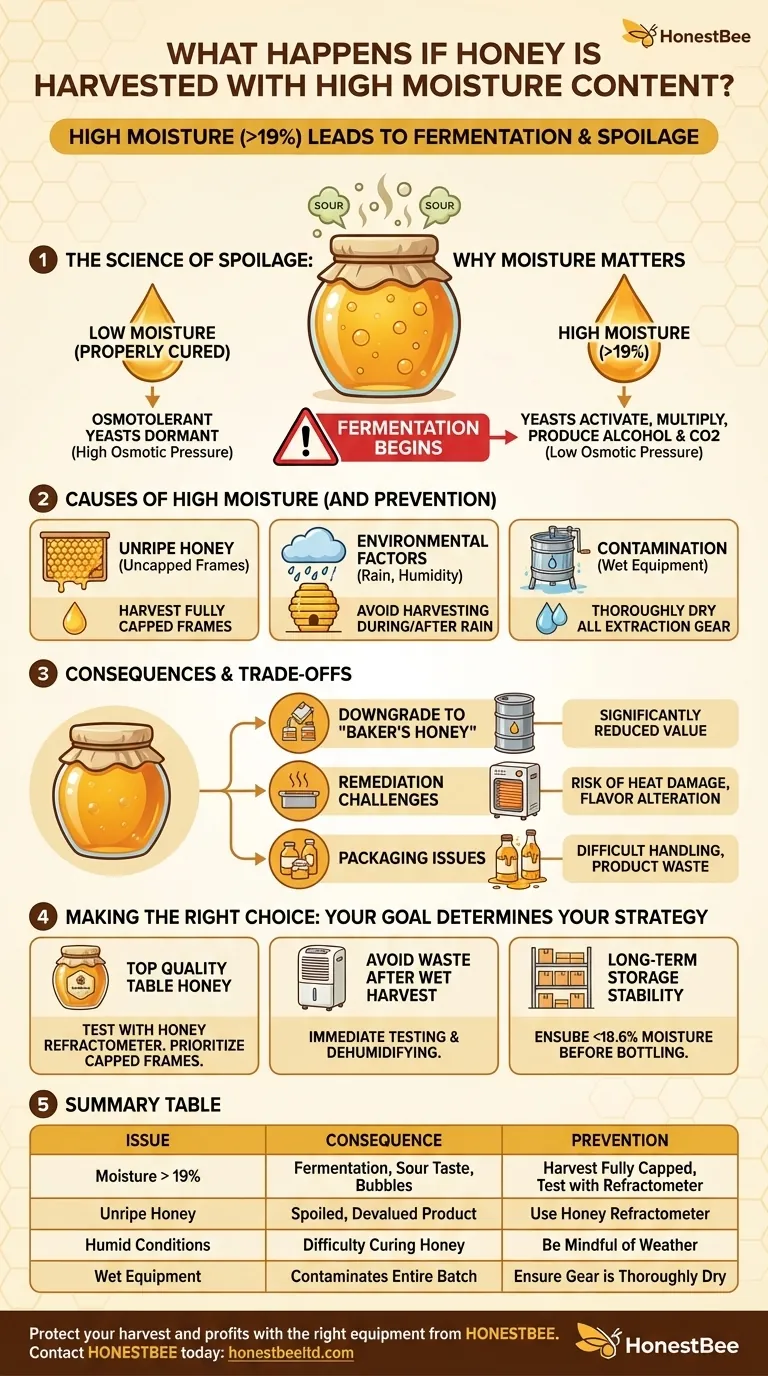
Related Products
- Precision Honey Refractometer Instrument for Quality Assessment
- Digital Honey Refractometer for Precision Measurement of Optimal Honey Quality
- 8-Frame Electric Self-Reversing Honey Extractor Spinner for Commercial Honey Extraction Equipment
- 10L Stainless Steel Electric Honey Press Machine
- Easy Use Manual Stainless Steel Honey Press for Honey Comb
People Also Ask
- What are the benefits of using a Pocket Digital Honey Refractometer? Achieve Precision & Speed in Honey Quality Control
- What are the key points for proper usage of a honey refractometer? Ensure Accurate Moisture Readings Every Time
- Why is a honey refractometer essential for honey harvesting? Protect Your Harvest from Spoilage
- What is a honey refractometer and what is its purpose? Ensure Honey Quality and Prevent Spoilage
- What is a honey refractometer? The Essential Tool for Perfect Honey Quality

